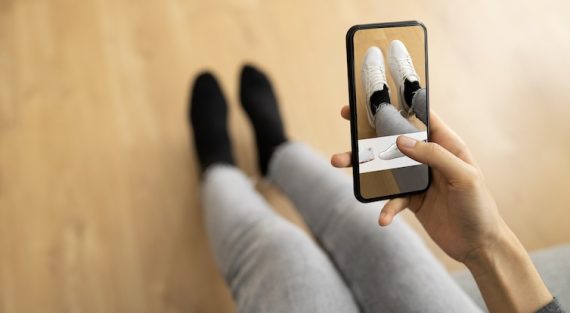Retail prognosticators have long predicted the convergence of physical and online selling. From the first book sold on Amazon in 1995, there has been a slow blurring of the lines, so to speak, towards multichannel and omnichannel.
Occasionally the change has been abrupt. The pandemic drove demand for buy-online, pick-up in-store services. That triggered the rapid development of software connecting online ordering with brick-and-mortar locations. Post covid, the demand has waned, yet the infrastructure and software remain, representing an omnichannel leap.
Here’s why omnichannel retailing will accelerate in 2024.
Customer Experience
In 2024, the first significant merging of ecommerce and physical retail could be immersive customer experiences.
Augmented reality fitting rooms, interactive displays, and in-store robots are now live in real shopping applications, explained Aron Bohlig, a managing partner at ComCap, an investment bank, in an email.

Augmented reality allows shoppers to virtually try on shoes.
The AR or virtual fitting room market could reach $3.17 billion worldwide in 2024, on its way to more than $6 billion by 2027, according to Business Future Analysis, an India-based research firm, in a LinkedIn post.
The investment in virtual fitting rooms is based on at least some initial success. A Shopify Plus case study with the fashion brand Rebecca Minkoff reported that shoppers were “65 percent more likely to place an order after interacting with a product in AR.”
Pop-ups and Partnerships
ComCap’s Bohlig also noted that online brands are experimenting with physical locations, including pop-up shops, experiential events, and partnerships with brick-and-mortar stores.
According to Bohlig, online-first brands want to cultivate direct customer relationships and gather immediate feedback.
Notable examples include:
- eBay’s “The ’85 Shop” retail pop-up store in Chicago,
- Shein pop-ups in Los Angeles, Toronto, and Birmingham, U.K.,
- BarkShop’s live pop-up shop in Manhattan’s SoHo district.
Consumer Outlook
U.S. and global inflation has declined, and consumer confidence has risen since mid-2023.
Nonetheless, some 12.6% of Americans surveyed in December 2023 expected their incomes to decrease in the short term, according to a report from The Conference Board, a nonprofit business think tank, while 18.7% expect their incomes to increase, up from 17.7% in November.
Hence the U.S. consumer economic outlook is mixed. And consumers’ views of the economy will influence everything from inventory management and pricing strategies to technology investments.
Walmart, for example, will reportedly close as many as 150 underperforming physical locations in 2024, potentially shifting resources toward ecommerce. Walmart’s online sales grew from $25.1 billion in 2019 to $82.1 billion in 2023.
When physical retailers prioritize ecommerce, and vice versa, they can allocate resources for maximum profits.
Shopper Behavior
More than half of American shoppers (54%) use search engines to research purchase decisions, according to an April 2023 survey from eMarketer. And 43% search the Amazon marketplace and other retailers’ websites for products.
The same eMarketer report projects ecommerce to represent 20.6% of total U.S. retail sales by 2027.
Bottom line, most shopping journeys start online now and even more moving forward. Expect physical retailers to hasten online experiences in 2024.
Organizational Structure
A final milestone on the path toward omnichannel selling is the organizational structure of retail businesses.
A decade ago, most ecommerce functions at large retailers were nestled in the information technology or marketing departments. Managers of in-store operations reported to different executives than their ecommerce counterparts.
Those siloes have changed.
Ecommerce and brick-and-mortar managers now typically report to the same retail operations execs. This leads to daily collaborations and a unified sales channel — true omnichannel retailing.





